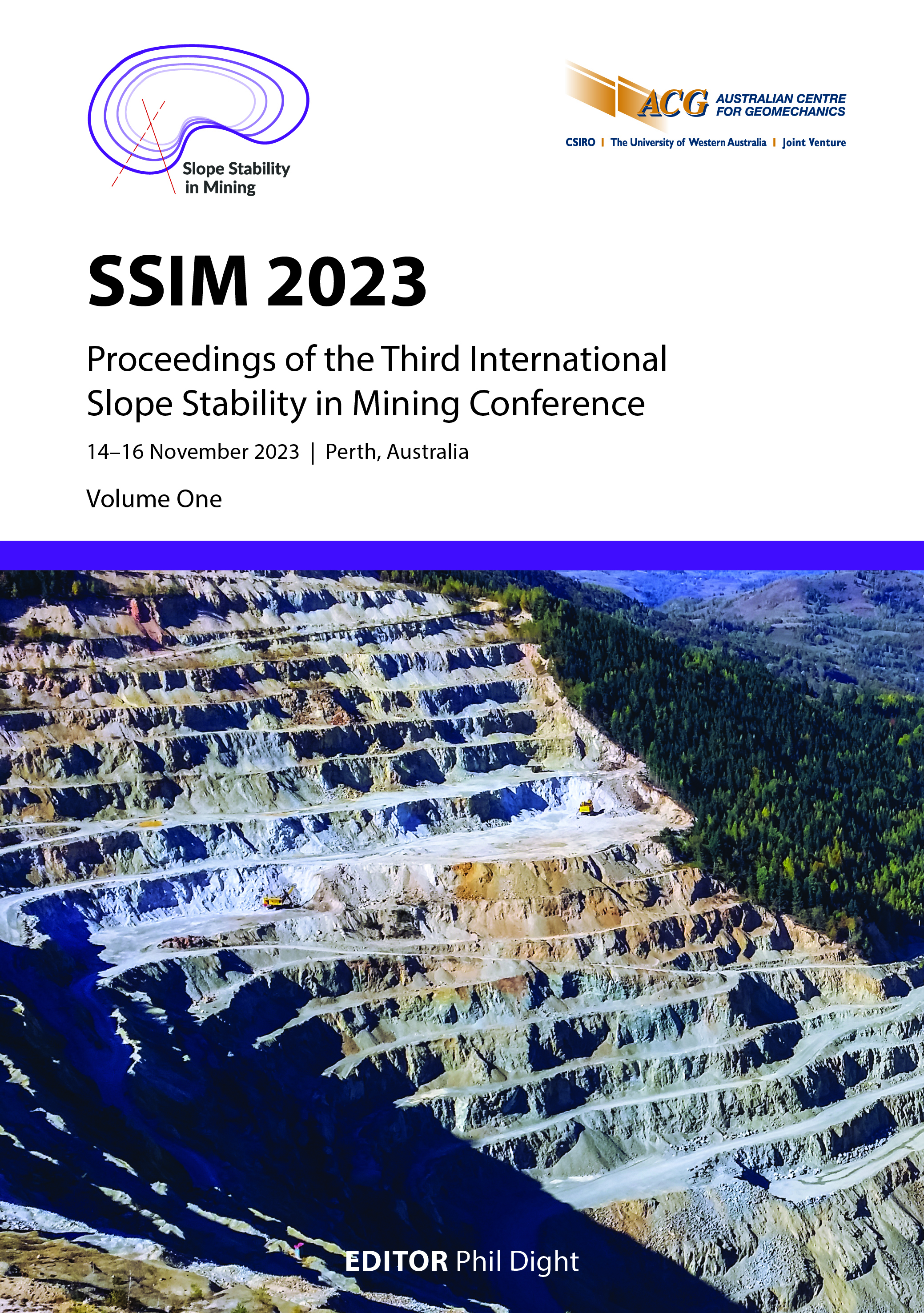Satellite monitoring supporting mining pipeline integrity

|
Authors: Hauck, A; Oliveira, GD; Badaró, JVO; Albiol, D; Devanthery, N; Lluch, J; Giralt, A; Athayde, C; Payàs, B |
DOI https://doi.org/10.36487/ACG_repo/2335_54
Cite As:
Hauck, A, Oliveira, GD, Badaró, JVO, Albiol, D, Devanthery, N, Lluch, J, Giralt, A, Athayde, C & Payàs, B 2023, 'Satellite monitoring supporting mining pipeline integrity', in PM Dight (ed.), SSIM 2023: Third International Slope Stability in Mining Conference, Australian Centre for Geomechanics, Perth, pp. 783-792, https://doi.org/10.36487/ACG_repo/2335_54
Abstract:
Satellite applications in the mining industry range from the exploration phase through to production and post-closure monitoring. Interferometric synthetic aperture radar (InSAR) is a satellite application commonly used to measure ground motion in mining sites. Samarco Mineração operates 398 km of triple mining pipeline to transport its ore through the Brazilian states of Minas Gerais and Espírito Santo to the Port of Ponta Ubu. On its way, the ore pipe crosses different landscapes, and among them are hilly areas with slope stability concerns. The pipelines are mostly buried but run overground in some sections. They are costly to monitor due to their length, and as they are often located in remote areas, the use of InSAR is of high value. Samarco Mineração´s safety management team carries out a geological and geotechnical risk analysis throughout the pipeline corridor on an annual basis. A team of people and resources are devoted to that task, and specific ground instrumentation is also in place. InSAR has been applied to support this ground team and ensure the maintenance of the pipeline is carried out in the most effective way. InSAR detects unstable slopes and anticipates ground instabilities that can affect the pipeline infrastructure. An initial historical study has been carried out, followed by an intense monitoring plan with different types of satellite imagery. This paper demonstrates how the combination of C-band and L-band synthetic aperture radar imagery provides valuable information to support pipeline integrity. InSAR results provide an inventory of hotspots, and the continuous monitoring of the sites supports the implementation of stabilisation works when needed. In addition to the preventive assessment, an ATLAS InSAR long-term monitoring scheme allows the monitoring of slopes after the implementation of stabilisation works, in order to assess the behaviour over time. This paper demonstrates how InSAR increases operational safety, reduces uncertainty, minimises onsite intervention and contributes to efficient instrumentation network planning.
Keywords: pipeline monitoring, lnSAR, pipeline integrity
References:
Bamler, R & Hartl P 1998, ‘Synthetic aperture radar interferometry’, Inverse Problems, vol. 14, no. 4, pp. R1–R54.
Ferretti, A, Prati C & Rocca F 2000, ‘Nonlinear subsidence rate estimation using permanent scatterers in differential SAR interferometry ‘, IEEE Transactions on Geoscience and Remote Sensing, vol. 38, no. 5, pp. 2202–2212.
Ferretti, A, Prati C & Rocca F 2001, ‘Permanent scatterers in SAR interferometry’, IEEE Transactions on Geoscience and Remote Sensing, vol. 39, no. 1, pp. 8–20.
Massonnet, D, Rossi, M, Carmona, C, Adagna, F, Peltzer, G, Feigl, K & Rabaute, T 1993, ‘The displacement field of the Landers earthquake mapped by radar interferometry’, Nature, vol. 364, no. 8, pp. 138–142.
Mohr, JJ & Madsen, SN 1999, ‘Error analysis for interferometric SAR measurements of ice sheet flow’, IGARSS '99 Proceedings: IEEE 1999 International Geoscience and Remote Sensing Symposium, vol. 1, pp. 98–100.
Peçanha, R, Simões, M, Lumbreras, JF, Rizzato, M, Mansilla, J, de Freitas, PL, de Paiva, E, Calvano, P & Benchimol, M, 2020, ‘Mapa de Suscetibilidade dos Solos à Erosão Hídrica do Brasil’, Embrapa Solos,
Rizzato, M, Mansilla, JF, Lumbreras, JF, Peçanha, R, Simões, M, de Freitas, PL, de Paiva, E, de Oliveira, R & do Amaral, AJ 2020, ‘Mapa de Erodibilidade dos Solos à Erosão Hídrica do Brasil’, Embrapa Solos,
/documents/2924
Seppi, SA, López-Martinez, C & Joseau, MJ 2022, ‘Assessment of L-Band SAOCOM InSAR coherence and its comparison with C-cand: a case study over managed forests in Argentina’, Remote Sensing, vol. 14, no. 5652.
Simões, M, Peçanha, R, Lumbreras, JF, Rizzato, M, Mansilla, J, de Freitas, PL, de Paiva E, Calvano, P, Benchimol & M, 2019, ‘Mapa de Vulnerabilidade dos Solos à Erosão Hídrica do Brasil’, Embrapa Solos,
© Copyright 2024, Australian Centre for Geomechanics (ACG), The University of Western Australia. All rights reserved.
View copyright/legal information
Please direct any queries or error reports to repository-acg@uwa.edu.au
View copyright/legal information
Please direct any queries or error reports to repository-acg@uwa.edu.au

